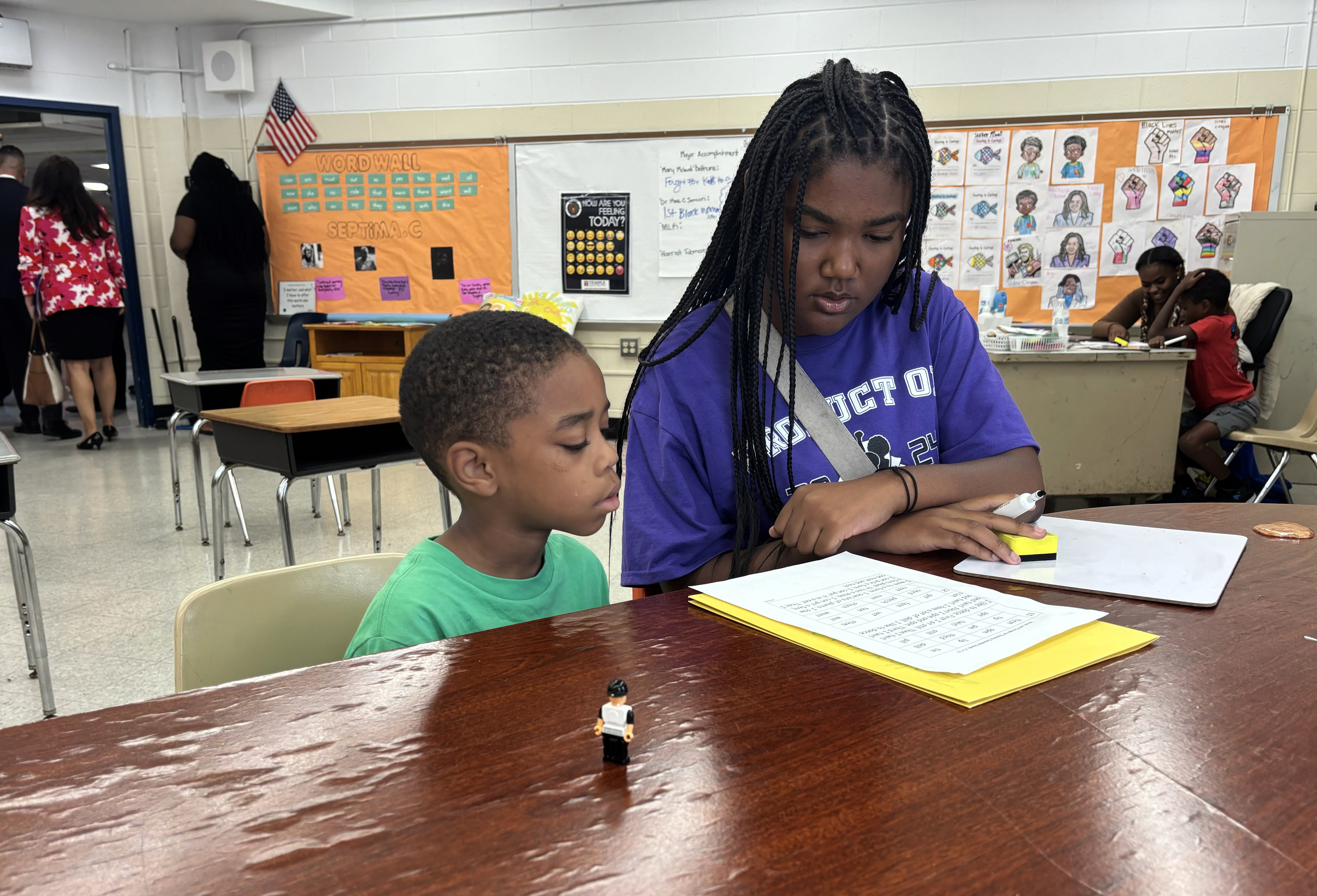Executive Summary
This report details the exceptional academic performance of Matthew Flinders Anglican College, which has recorded its highest-ever NAPLAN writing results for the third consecutive year. This achievement is in direct contrast to a national trend of declining writing proficiency among Australian students. The college’s success provides a significant case study for achieving Sustainable Development Goal 4 (SDG 4): Quality Education, by demonstrating an effective, evidence-based pedagogical framework that yields superior learning outcomes.
Performance Analysis and Contribution to SDG 4
NAPLAN 2025 Results Overview
The college’s 2025 NAPLAN results indicate a substantial positive variance against state benchmarks, directly supporting the objectives of SDG 4 by ensuring effective and relevant learning outcomes.
- Year 7 Writing: Students performed 15.6% above the Queensland state average.
- Year 9 Writing: Students scored 11.15% above the Queensland state average.
- Year 3 Grammar and Punctuation: Students surpassed the state average by 25%.
- Overall Performance: Across all five NAPLAN domains, students exceeded state averages by a margin of 6% to 25%.
Addressing National Educational Challenges (SDG Target 4.1)
These results are particularly noteworthy when contextualized by the Australian Education Research Organisation’s June 26 report, which found many Year 9 students nationally are writing at a primary-school level. The college’s performance demonstrates a successful model for reversing this trend, directly contributing to SDG Target 4.1, which aims to ensure all children complete equitable and quality primary and secondary education leading to effective learning outcomes.
Strategic Framework for Educational Excellence
The Flinders Teaching and Learning Framework
The college attributes its success to a bespoke Teaching and Learning Framework. This strategic approach is grounded in the Science of Learning and focuses on achieving mastery in foundational skills, a core component of quality education.
- Core Principle: Embedding Science of Learning principles through explicit teaching models.
- Data-Driven Approach: Continuous use of NAPLAN and other assessment data to review, refine, and innovate curriculum programs.
- Standardised Instruction: A deliberate focus on a common language of learning and structured, low-variance lessons to support knowledge retention and skill development.
Teacher Development and Quality Assurance (SDG Target 4.c)
A central pillar of the framework is a commitment to enhancing teacher expertise. The college provides ongoing professional development to ensure classroom practices are focused on deep learning and engagement. This investment in human capital aligns with the principles of SDG Target 4.c, which emphasizes the importance of increasing the supply of qualified teachers to deliver quality education.
Curriculum-Specific Interventions (SDG Target 4.6)
The college has implemented evidence-based literacy programs across all year levels to ensure all students achieve foundational literacy and numeracy, a key objective of SDG Target 4.6.
- Secondary School Programs: English teachers provide explicit instruction in vocabulary and grammar, employing techniques from established programs such as Scarborough’s Reading Rope and Hochman’s The Writing Revolution. These methodologies are being progressively adopted by other subject areas.
- Primary School Support: Students receive targeted support through literacy mastery lessons, adaptive learning programs featuring small group instruction, and a specialised writing framework co-developed with Science of Learning experts.
Broader Impact and Partnerships for the Goals (SDG 17)
Knowledge Sharing and Community Engagement
The college extends its commitment to quality education beyond its own campus. In April, it hosted the 2025 Science of Learning Conference, which attracted over 450 educators. By featuring prominent speakers from AERO and other institutions, the college facilitated the sharing of evidence-based strategies to improve student outcomes across the sector. This initiative exemplifies a commitment to SDG 17 (Partnerships for the Goals), fostering collaboration to advance educational standards on a broader scale.
SDGs Addressed in the Article
-
SDG 4: Quality Education
The entire article is centered on education, specifically the quality of learning outcomes in literacy and numeracy. It discusses the success of Matthew Flinders Anglican College in improving student performance against a backdrop of a national decline. This directly relates to SDG 4, which aims to “ensure inclusive and equitable quality education and promote lifelong learning opportunities for all.” The article explores teaching methodologies (Science of Learning), curriculum innovation, and teacher development as means to achieve high-quality educational results.
Specific SDG Targets Identified
-
Target 4.1: By 2030, ensure that all girls and boys complete free, equitable and quality primary and secondary education leading to relevant and effective learning outcomes.
The article directly addresses this target by focusing on the learning outcomes of primary (Year 3) and secondary (Year 7 and 9) students. It uses NAPLAN results as a measure of “effective learning outcomes” in fundamental skills. The college’s success, with students “exceeding state averages by 6% to 25% across all five NAPLAN domains,” is presented as an example of achieving quality education at these levels.
-
Target 4.6: By 2030, ensure that all youth and a substantial proportion of adults, both men and women, achieve literacy and numeracy.
This target is central to the article’s theme. The discussion revolves around the proficiency of students in literacy (writing, reading, grammar, punctuation, spelling) and numeracy. The article highlights a national problem where “many Year 9 students across Australia were writing at primary-school level,” directly referencing a failure to achieve this target on a broader scale. The college’s success in these specific areas, such as Year 7 students exceeding the state writing benchmark by 15.6%, demonstrates a localized achievement of this target.
-
Target 4.c: By 2030, substantially increase the supply of qualified teachers, including through international cooperation for teacher training in developing countries…
While the article is set in Australia, not a developing country, the principle of improving teacher quality is a key theme. The school’s success is attributed to its teaching framework and investment in staff expertise. The text states, “Teachers receive ongoing professional development to ensure classroom practices focus on deep learning,” and mentions the college hosted a “Science of Learning Conference” for “over 450 educators.” This focus on upskilling and training teachers to use “evidence-based strategies” aligns with the goal of increasing the number of qualified and effective educators.
Indicators for Measuring Progress
-
Indicator 4.1.1: Proportion of children and young people (a) in grades 2/3; (b) at the end of primary; and (c) at the end of lower secondary achieving at least a minimum proficiency level in (i) reading and (ii) mathematics.
The article provides direct evidence for this indicator through the NAPLAN results. NAPLAN assesses students in Years 3, 7, and 9 in literacy and numeracy, which corresponds to the measurement points in the indicator. The article explicitly states quantitative results that measure proficiency, such as “Year 9 students scored 11.15% above the Queensland average in writing” and “Year 3 students, who surpassed the state average in grammar and punctuation by 25%.” These statistics are a direct measure of the proportion of students achieving proficiency.
-
Indicator 4.c.1: Proportion of teachers in: (a) pre-primary; (b) primary; (c) lower secondary; and (d) upper secondary education who have received at least the minimum organized teacher training (e.g. pedagogical training) pre-service or in-service…
This indicator is implied through the article’s emphasis on teacher development. The school’s strategy involves implementing a “bespoke framework” that requires specific training and “ongoing professional development.” The mention of teachers being trained in specific, evidence-based programs like “Scarborough’s Reading Rope and Hochman’s The Writing Revolution program” suggests a structured, in-service training system is in place to ensure teachers are qualified to deliver the curriculum effectively. The conference for 450 educators further implies a commitment to organized teacher training.
Summary of Findings
| SDGs | Targets | Indicators |
|---|---|---|
| SDG 4: Quality Education | Target 4.1: Ensure quality primary and secondary education leading to effective learning outcomes. | Indicator 4.1.1: The article uses NAPLAN results for Years 3, 7, and 9 to measure proficiency levels in literacy and numeracy, directly aligning with this indicator. |
| SDG 4: Quality Education | Target 4.6: Ensure all youth achieve literacy and numeracy. | Indicator 4.1.1: The measurement of literacy and numeracy skills via NAPLAN serves as the metric for assessing progress towards this target for the youth demographic discussed. |
| SDG 4: Quality Education | Target 4.c: Substantially increase the supply of qualified teachers. | Indicator 4.c.1 (Implied): The article implies this through its description of “ongoing professional development,” training in specific pedagogical programs, and hosting a conference for 450 educators, all of which represent organized in-service teacher training. |
Source: theeducatoronline.com







